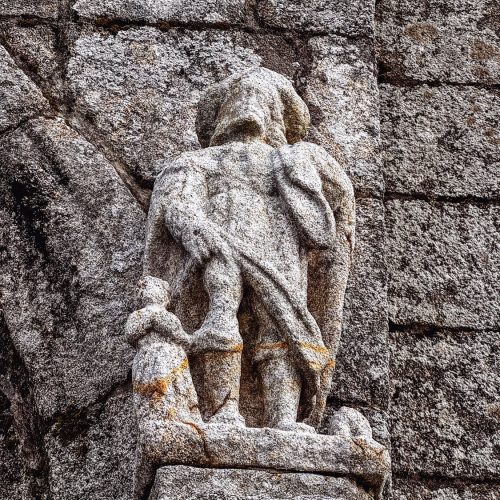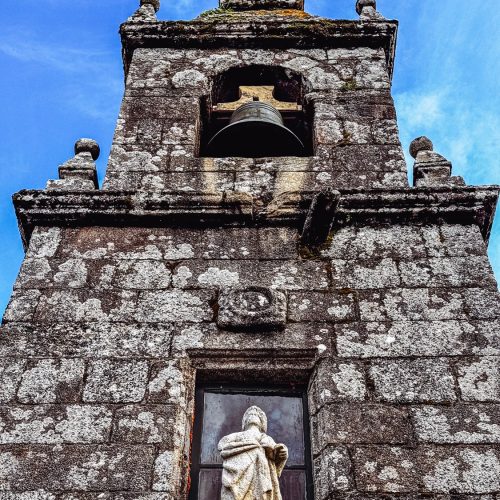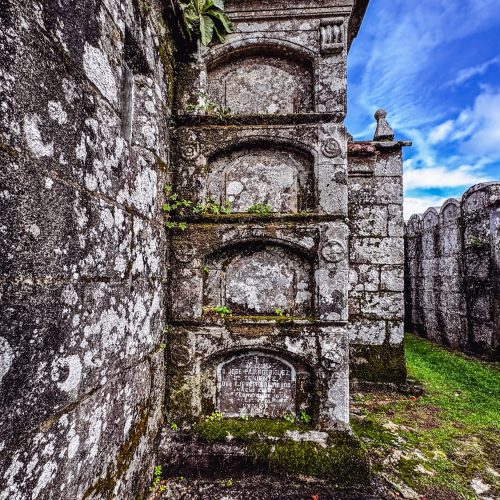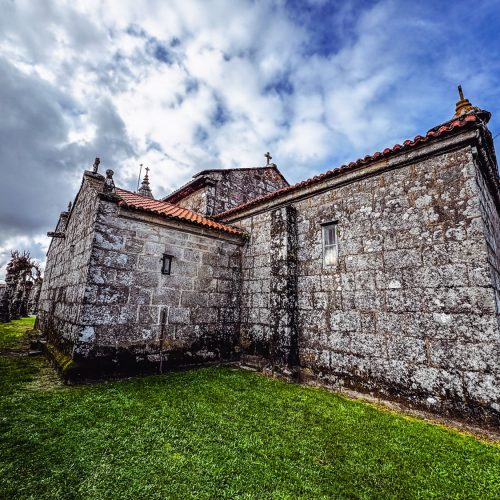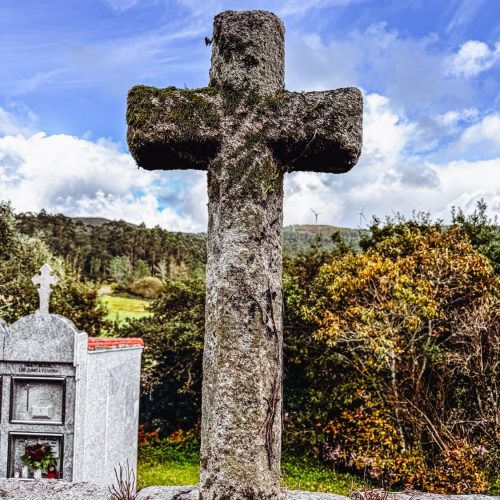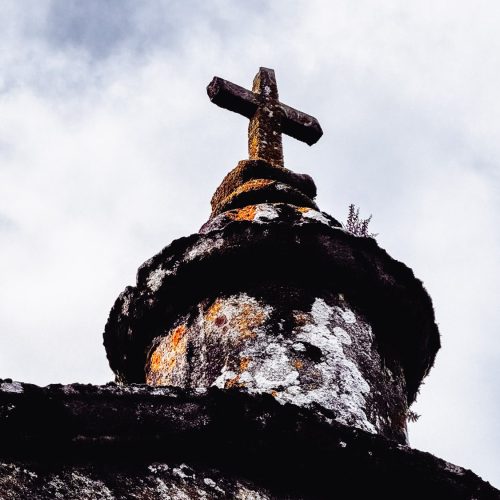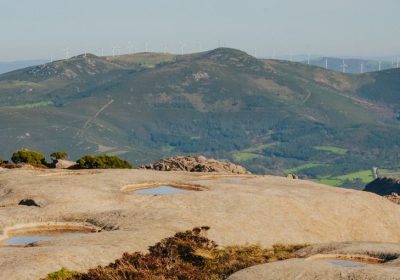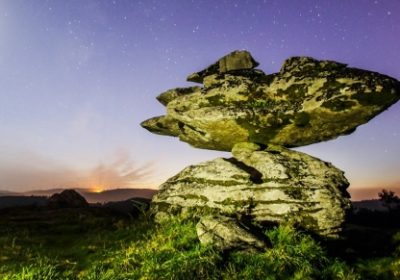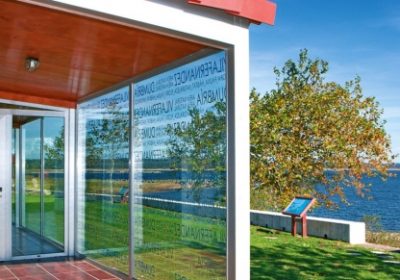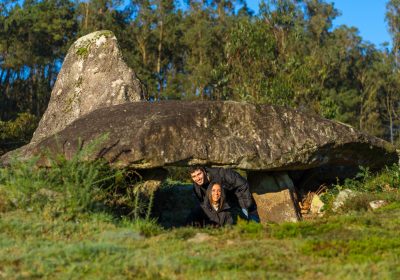The Parish Church of Santa Baia (Saint Eulalia) of Dumbría sits right on the Fisterra–Muxía Way of the Camino de Santiago, in A Grixa (Dumbría, A Coruña), showcasing the quiet elegance of Galician Baroque. Built between the 17th and 18th centuries, it features a basilican single nave leading to a spacious main chapel, covered by a barrel vault in granite ashlar under the direction of master stonemason Josphe de Bar. The result is a balanced, light-filled space that invites contemplation.
Inside, two lateral chapels enrich the liturgical pathway and a wooden choir loft rises at the west end. The triumphal arch, a plain round arch, acts as a calm threshold into the main chapel, striking a measured balance between sobriety and solemnity—very much in tune with the Costa da Morte and the spirit of the Camino.
The high altarpiece, firmly Baroque, draws the eye: a large niche holds the image of Santa Baia carrying the palm of martyrdom. Its composition clearly reflects the influence of Simón Rodríguez—with applied plaques, C-scroll volutes and fruit motifs—adding rhythm and movement to the ensemble.
You’ll find the church in Dumbría’s town centre. From the Town Hall, take the DP-3404 towards A Serra de Outes and after about 300 metres the church stands on the left-hand side. For pilgrims on the Fisterra–Muxía route, it’s a perfect stop to savour local heritage and the stillness of Santa Baia.




